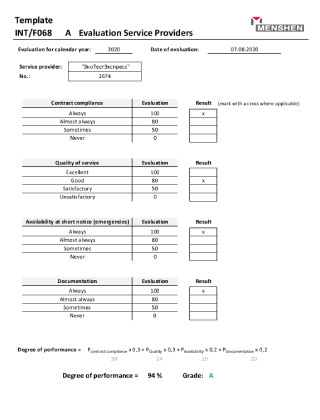Welcome to the future of shopping, where endless aisles and incredible deals are just a click away. Online retail puts a world of products at your fingertips, delivering unparalleled convenience and choice right to your door. It’s a dynamic marketplace designed for the modern, savvy shopper.
The Evolution of the Digital Storefront
The digital storefront has come a long way from the basic, text-heavy websites of the 1990s. Today, it’s a dynamic, interactive experience powered by AI and rich media. This evolution has made e-commerce optimization crucial for standing out, shifting focus from simply listing products to creating seamless, personalized customer journeys. Modern stores are integrated across social media and mobile apps, making shopping effortless. This transformation highlights the importance of a strong online presence, turning every screen into a potential shop window and redefining how we discover and buy everything.
From Niche Market to Mainstream Commerce
The digital storefront has evolved from a simple online catalog into a dynamic, interactive hub. Early websites were static pages, but the rise of e-commerce platforms transformed them into powerful sales engines. Today, they are personalized experiences driven by AI, offering curated product recommendations and seamless omnichannel journeys. This shift prioritizes user experience optimization above all, turning casual browsers into loyal customers.
The screen is no longer just a window to a shop, but the very fabric of the shopping experience itself.
From basic transactions to immersive brand storytelling, the digital door is always open, smarter and more engaging than ever before.
The Rise of Mobile Shopping and Apps
The evolution of the digital storefront has shifted from a static online catalog to a dynamic, data-driven customer experience platform. Modern e-commerce solutions leverage AI for personalization, integrate omnichannel fulfillment like BOPIS, and prioritize mobile-first design and user-generated content to build trust. This transformation is essential for a robust **e-commerce SEO strategy**, as search engines now heavily favor sites offering superior user experience and valuable content. A truly effective storefront today acts less like a warehouse and more like a personalized shopping assistant. Success now hinges on creating a seamless, engaging journey that guides the customer from discovery to purchase and beyond.
Integrating Social Media into the Buyer’s Journey
The digital storefront has evolved far beyond a simple online catalog. Initially just a «brochure-ware» site, it’s now a dynamic hub for customer engagement. The rise of mobile commerce forced a redesign for smaller screens, while integrated payment gateways made checkout seamless. Today, AI-powered chatbots offer instant support and algorithms provide personalized product recommendations, creating a tailored shopping journey for every visitor. This shift focuses on enhancing user experience and building a brand community, not just processing transactions.
Building a Seamless Customer Experience
Building a seamless customer experience requires a holistic strategy that integrates all touchpoints into a unified journey. This involves breaking down internal silos to ensure consistent messaging and service across marketing, sales, and support. By leveraging a centralized customer data platform, businesses can gain a single view of the customer, enabling personalized interactions at every stage. The ultimate goal is to create a frictionless flow where customers can move effortlessly between channels, fostering loyalty and driving long-term value through exceptional, consistent service that feels intuitive rather than interrupted.
Designing for Intuitive Site Navigation
Imagine a customer’s journey not as a series of disconnected clicks, but as a smooth, unfolding story. They browse a product on their phone, receive a personalized email reminder, and find their cart waiting when they log into their laptop. This effortless continuity is the heart of a unified customer journey. By integrating systems and data, businesses can anticipate needs at every touchpoint, transforming a simple transaction into a memorable and frictionless narrative that builds lasting loyalty.
Crafting Compelling Product Pages
Building a seamless customer experience requires a unified, customer-centric strategy that eliminates friction across all touchpoints. This involves integrating your CRM, e-commerce platform, and support systems to create a single source of truth. Key actions include mapping the entire customer journey, personalizing interactions based on past behavior, and ensuring consistent messaging. Omnichannel customer engagement is critical, as customers expect to move effortlessly between your website, mobile app, and social media without repeating themselves.
A disjointed experience is the fastest way to erode customer trust and loyalty.
Ultimately, this holistic approach fosters increased satisfaction, higher lifetime value, and a formidable competitive advantage.
Streamlining the Checkout and Payment Process
Building a seamless customer experience is foundational to modern brand loyalty. It requires integrating all touchpoints—from initial social media discovery and mobile-friendly e-commerce to post-purchase support—into a single, fluid journey. This omnichannel customer engagement strategy ensures consistency and eliminates frustrating friction. Key steps include unifying your data platforms for a 360-degree customer view and training all departments, not just support, on customer-centric principles. A frictionless experience transforms casual buyers into devoted brand advocates.
Every interaction, regardless of channel, must feel like a continuation of the same conversation.
Strategies for Driving Traffic and Sales
To drive traffic and sales, a multi-channel strategy is essential. Begin by mastering search engine optimization to capture high-intent organic traffic. Complement this with targeted paid advertising on social media and search engines for immediate reach. Convert visitors by optimizing your website for a seamless user experience and clear calls-to-action. Building an email list allows for direct, personalized marketing, nurturing leads into loyal customers. Ultimately, integrating content marketing, social media engagement, and data-driven conversion rate optimization creates a powerful, self-reinforcing cycle that consistently grows your audience and revenue.
Mastering Search Engine Optimization
Effective strategies for driving traffic and sales begin with a solid foundation of search engine optimization. By creating high-quality, keyword-rich content that answers user queries, businesses can attract a consistent stream of organic visitors. This targeted traffic is more likely to convert, especially when supported by a clear value proposition and a streamlined user experience. Ultimately, a multi-channel approach that integrates content marketing with social media and email campaigns often yields the best results. Retargeting ads can then re-engage these potential customers, guiding them through the sales funnel to complete a purchase.
Leveraging Email Marketing and Automation
To effectively drive traffic and sales, a multi-channel approach is essential for improving search engine visibility. Begin by creating high-quality, valuable content that addresses your audience’s core needs and pain points, establishing your brand as a trusted authority. This foundational content then becomes the fuel for strategic promotion across social media and email marketing campaigns. Simultaneously, a streamlined user experience with clear calls-to-action and a frictionless checkout process is non-negotiable for converting the traffic you earn. By consistently analyzing performance data, you can refine these tactics to maximize both reach and revenue, ensuring sustainable business growth.
Utilizing Paid Advertising Effectively
Effective strategies for driving traffic and sales begin with a robust content marketing strategy. Creating high-quality, valuable content that addresses customer needs attracts organic visitors and builds trust. This foundational traffic can then be converted through clear calls-to-action, optimized landing pages, and targeted email marketing campaigns. Utilizing data analytics to understand user behavior allows for continuous refinement of these tactics, ensuring resources are allocated to the most effective channels for generating qualified leads and maximizing return on investment.
Optimizing for Conversions and Retention
Optimizing for conversions and retention is the dual-pronged strategy essential for sustainable business growth. The initial focus is on conversion rate optimization, which involves systematically improving a website or app to guide users toward a desired action, such as a purchase or sign-up. This is achieved through A/B testing, user experience enhancements, and persuasive copy. However, acquiring a customer is only the beginning. The subsequent, critical phase is retention, where the goal is to nurture existing users into loyal, repeat customers. This involves personalized communication, loyalty programs, and consistently delivering value, ultimately maximizing customer lifetime value and ensuring long-term success.
Implementing Personalization and Recommendations
Optimizing for conversions and retention is about turning visitors into loyal fans. It starts with a smooth user experience that guides people to take action, like signing up or buying something. But the real magic happens after that first click. By using data-driven personalization, you can create targeted email flows and in-app messages that make customers feel valued, dramatically increasing the chance they’ll stick around and buy again. This one-two punch of acquiring and keeping happy users is the core of sustainable growth.
Building Loyalty Through Rewards Programs
Optimizing for conversions and retention is the core of sustainable business growth, focusing on both acquiring valuable customers and maximizing their lifetime value. This dual-pronged approach involves a continuous cycle of refining the user journey to encourage initial actions like purchases or sign-ups, while simultaneously building loyalty through exceptional post-purchase experiences and engagement. A successful strategy relies on data-driven decision making, using analytics to understand user behavior, identify friction points, and personalize interactions. Ultimately, this creates a virtuous cycle where improved retention fuels positive word-of-mouth, which in turn lowers acquisition costs and drives higher-quality conversions.
Harnessing the Power of User-Generated Content
Optimizing for conversions and retention requires a dual focus on acquisition and long-term value. The initial goal is to improve user experience to guide visitors toward a desired action, such as a purchase or sign-up. However, sustainable growth hinges on retaining those users through personalized communication, loyalty programs, and consistently delivering value. This creates a virtuous cycle where retained customers often have a higher lifetime value and can become brand advocates, ultimately reducing acquisition costs and driving organic growth.
Navigating Logistics and Fulfillment
Navigating logistics and fulfillment can feel like a giant puzzle, but getting it right is a game-changer for your business. It’s all about moving your products from your warehouse to your customer’s doorstep smoothly and cost-effectively. This involves choosing the right shipping partners, managing inventory levels so you never run out of stock, and mastering the art of order fulfillment to keep customers happy. A streamlined process not only saves you money but also builds a reputation for reliability, which is a huge competitive advantage in today’s fast-paced market.
Choosing the Right Shipping Solutions
Navigating logistics and fulfillment requires a strategic approach to managing the entire supply chain, from receiving inventory to final-mile delivery. A robust order fulfillment process is critical for customer satisfaction and operational efficiency. Key considerations include selecting the right warehousing solution, integrating technology for real-time inventory visibility, and establishing strong carrier relationships. Proactively managing these elements minimizes shipping delays and reduces costs, directly impacting your bottom line and brand reputation.
**Q: What is the biggest challenge in e-commerce fulfillment?**
**A:** Achieving accurate, on-time delivery while controlling shipping costs, which often requires a scalable third-party logistics (3PL) partner.
Developing a Clear Returns and Refunds Policy
Navigating logistics and fulfillment is all about getting your product into your customer’s hands smoothly and efficiently. It’s the behind-the-scenes engine of e-commerce, directly impacting customer satisfaction. A robust supply chain management strategy is crucial for success. This involves juggling everything from warehousing and inventory management to picking, packing, and choosing the right shipping partners. Getting it right means faster delivery times and fewer costly errors, which keeps everyone happy.
Exploring Omnichannel and BOPIS Models
Navigating logistics and fulfillment is the critical engine driving modern commerce, transforming a simple order into a tangible customer experience. It demands a seamless flow from warehouse shelves to the customer’s doorstep, requiring precision in inventory management, picking, packing, and last-mile delivery. Mastering this complex dance is essential for supply chain optimization, directly impacting cost efficiency and brand reputation. A dynamic strategy, often leveraging advanced technology, is key to overcoming challenges and ensuring timely, accurate deliveries that build lasting loyalty.
Analyzing Data for Continuous Growth
In the quiet hum of the server room, data tells the story of our journey. We don’t just collect numbers; we listen to them, seeking the subtle patterns that reveal customer desires and operational bottlenecks. This ongoing analysis is the compass for sustainable growth, guiding every strategic pivot. By embracing a culture of data-driven iteration, we transform raw information into a roadmap, ensuring each decision is not a guess but a calculated step forward, building momentum with every cycle of insight and action.
Tracking Key Performance Indicators
Analyzing data for continuous growth transforms raw information into a powerful engine for progress. By systematically examining key performance https://prosounddepot.com/ indicators, businesses can move beyond static reporting into a dynamic cycle of insight and action. This process of data-driven decision making uncovers hidden opportunities, optimizes customer journeys, and predicts market trends. It’s the strategic compass that guides iterative improvements, ensuring every initiative is measured, refined, and aligned with long-term objectives. A robust data analytics framework is therefore not a luxury, but the fundamental catalyst for sustainable scaling and enduring market relevance.
Conducting A/B Testing for Site Improvements
Analyzing data for continuous growth transforms raw numbers into a strategic roadmap for perpetual advancement. By systematically interpreting key performance indicators, businesses can move beyond static reporting to uncover actionable insights and emerging trends. This dynamic process of data-driven decision making empowers organizations to optimize operations, personalize customer experiences, and proactively seize new opportunities. It’s the essential feedback loop that fuels innovation and ensures every action contributes to an upward trajectory, turning potential into measurable, sustained success.
Using Customer Feedback to Inform Strategy
Analyzing data for continuous growth transforms raw information into a strategic roadmap for improvement. By systematically tracking key performance indicators, businesses can identify trends, pinpoint inefficiencies, and uncover hidden opportunities. This process of data-driven decision making enables organizations to make proactive adjustments, optimize operations, and allocate resources with precision. It shifts the focus from reactive problem-solving to a forward-thinking culture of perpetual refinement, ensuring every action contributes directly to scalable and sustainable success.



















